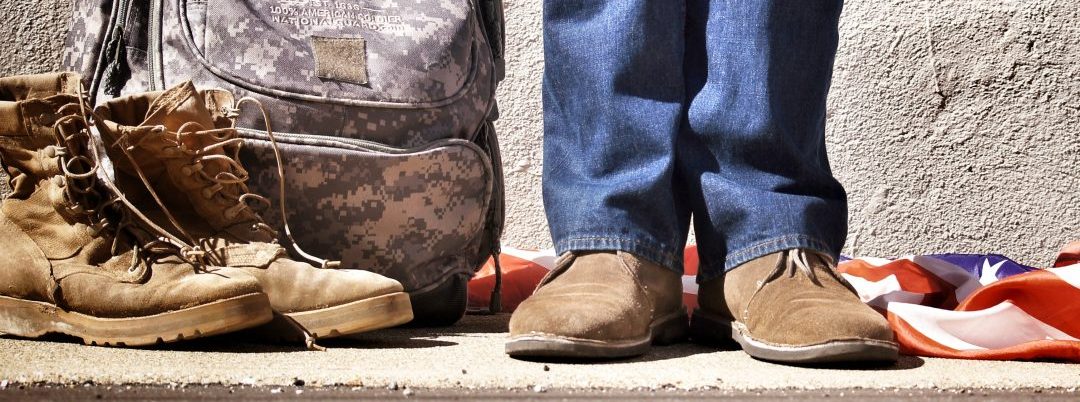
 By William L. Brim, PsyD | Deputy Director Center for Deployment Psychology
By William L. Brim, PsyD | Deputy Director Center for Deployment Psychology
A psychologist serving as the deputy director of the Center for Deployment Psychology (deploymentpsych.org), William Brim, PsyD, is a veteran of the U.S. Air Force and has written chapters and articles and presented extensively on military culture. He was the Department of Defense lead on the development of the VA/DoD’s courses on “Military Culture: Core Competencies for Healthcare Professionals”(deploymentpsych.org/military-culture-course-modules).
Photos in this article are courtesy of the Department of Defense.
Clinical mental health counselors often ask faculty at the Center for Deployment Psychology, “How do I find and work with service-members, veterans, or their families? Should I become a Tricare provider? Advertise in a military newspaper? What are the first steps?”
In addition to addressing these initial steps, this article includes some basic “do’s and don’ts” for talking to military members, and it provides suggested first questions for your interview with a service-member or veteran.
What will you bring to your work with clients connected to the military?
There are a variety of ways to find and engage military members and veterans in your practice, but the first steps you take should be more about you as a provider and less about the practical business side of getting clients. Here are three, key, initial steps:
1. Recognize the military as a unique culture
The first step in growing your practice to work with clients connected to the military is to recognize that the military has a unique culture, and that many of us don’t learn much about it in our typical cross-cultural counseling classes.
Even providers who have served in the military often find themselves learning new things about the military culture, the warrior ethos, and other service branches when they engage service-members, veterans, and their families in clinical care. The simple act of conceptualizing the military as a unique culture that potentially shapes your clients’ worldview and beliefs is a critical first step in gaining competency.
2. Assess/evaluate your own biases and beliefs about the military and military members
Connecting effectively with the military population means understanding your own bias and beliefs that might affect therapy. Your assumptions may be based on your age, family values, and experience. Did you grow up in the era around WWII or the Vietnam War? What is the impact of the generation you were raised in on your view of the military and its members? What were your family’s views of the military and its purpose? Has anyone in your family ever served in the Armed Forces? If so, what was their experience, and how did their opinions inform the family’s level of value on military service?
To be the most effective when working with a client from a culture different from your own, it is important to be aware of ways that your own notions and stereotypes might affect your interaction with a military member, veteran, or their family members.
Sample self-assessment questions include:
- What are my preconceived notions about the military culture?
- What stereotypes do I have about the military?
- What are my beliefs about the military and its role in our country?
- How were my beliefs about the military and its role in our country formed?
- What are my beliefs about the people who join the military?
- How do I feel about the current conflicts?
- Regardless of my feeling about the current conflicts, negative or positive, can I separate these feelings from how I feel about those who serve and who wear the military uniform?
Becoming aware of your own bias and assumptions will allow you to move towards a larger awareness of the military culture and promotes a willingness to assume a “cultural humility” as you begin the assessment process.
3. Learn more about the military culture, and incorporate that knowledge into your practice
Many therapists without a military background report feeling concerned about their ability to “bridge the gap” with someone who has been off to war. Therapists want to ensure an effective connection and foster communication. While there are many avenues to learning more about the ins and outs of military service, an obvious place to start is using your good interview skills and displaying a genuine interest in learning from your clients.
Military members, like most people, are comfortable talking about their work, and it is better to show a genuine interest in what they do and the impact it has on them than to assume you know them simply by knowing the type of work they do. Asking your military-connected clients about their service, if done respectfully and without making assumptions, can strengthen rapport and establish trust, even with a provider who hasn’t served.
Some Practical “Do’s and Don’ts” To Consider When Talking With Members of the Military
Do:
- Acknowledge military service. Recognizing the sacrifice made by a service-member, veteran, or military/veteran family member initially is important. Whether this recognition is done in the waiting room with a sign that says, “Have you or a family member ever served in the military?” or in the initial paperwork or interview, this is the first step in a conversation about the military culture and its impact on the client.
- Set clear goals and expectations. Military members are often used to clear goals and structure, so it may be helpful to approach interactions in a goal-driven and step-by-step fashion. For example, a semi-structured interview can fit with their experiences with checklists and standard operating procedures.
- Normalize symptoms. Consider discussing the natural and adaptive function of the symptoms during deployment and the need to manage and re-direct energy in the non-deployed environment.
- Find ways to identify and leverage clients’ skills and strengths, especially those associated with military training experience, as opposed to clients’ illness and vulnerability.
- Look for cues that indicate the apparent strength of their military identity. Are they wearing or displaying outward signs of military affiliation such as tattoos, hats, patches, dog tags, or military clothing?
- Ask the extent to which the service member relates his or her symptoms or concerns to their military service.
- Create a safe environment for these clients to explore potential moral concerns, and listen for themes such as survivor guilt.
Don’t:
- Don’t try to “talk the talk.” Military members and veterans generally have a low tolerance for pretenses, so know what you are talking about and admit when you do not.
- Don’t use abstractions. Military members and veterans generally shun abstraction; keep it straight forward and interesting.
- Don’t press for details of a traumatic event in an initial session or without providing a sound treatment rationale for doing so.
- Don’t ever ask, “Did you kill anyone?”
Suggested First Questions For Your Interview With A Service-Member or Veteran
With a heightened sense of the heterogeneity of the military culture, the culturally aware mental health provider understands that it is not sufficient to ask, “Are you a veteran or military member?”
What if the client says yes? What should your follow-up questions be?
Potential topics for questions can include the client’s branch of service, guard or reserve, years served, military rank and occupation(s), duty assignments, reasons for joining and staying in the military, career milestones, deployment and reintegration experiences, and impact of their service on their family.
Sample questions can include:
- What branch of service were you in?
- Were you ever in the Guard or Reserve?
- What years did you serve?
- What was your rank?
- What was your occupation(s) in the military?
- What are some of the reasons you decided to join the military originally? Are they different than the reasons you stayed in the military (if they served more than one to four years)?
- What does it mean to you to be a service-member or veteran?
- Were you ever deployed?
- When did you deploy? Where?
- Did you see combat? / How often were you “outside the wire”?
- Were you exposed to blasts while deployed?
- What was your exposure to the death of unit members, enemy combatants, or civilians?
- Do you feel you have any lasting physical or psychological effects from your exposure to these potentially traumatic events?
- What was the impact of deployment on your family?
These are just a few suggested questions that you might ask a service-member or veteran. Also, see the free resources in the box below.
After the First Steps
Once you take the initial steps presented above, it is finally time to return to the original question: “How do I find service-members and veterans?”
The answer is … you probably already have them in your practice. The most important thing you can do now is to ask all of your patients, “Have you or a family member ever served in the military?” When someone says “yes,” then you—now a culturally informed provider—can engage with enhanced self-awareness, sincere respect, and increased confidence.
Learn More
Visit the Center for Deployment Psychology’s website at DeploymentPsych.org/Military-Culture for free tools for providers, including:
- A complete self-assessment tool,
- A full listing of military history questions,
- A chart depicting military ranks,
- A list of military occupation codes and other resources, and
- To learn more about the military culture.
This article appeared in the November 2015 issue of The Advocate Magazine, the quarterly magazine of the American Mental Health Counselors Association (AMHCA), www.amhca.org.
Let’s keep in touch! Sign up to receive our newsletter:
Start a Relationship with An Exceptional Counselor
- Skilled and caring professional counselors
- Accepting all major and most insurances
- High-touch customer service & premium benefits
- Same- or next-day appointments
- Ultra-flexible 23.5hr cancellations












